ARHS Ancient-Medieval Midterm
1/14
There's no tags or description
Looks like no tags are added yet.
Name | Mastery | Learn | Test | Matching | Spaced |
|---|
No study sessions yet.
15 Terms
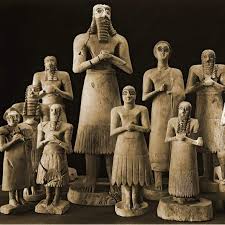
Twelve Votive Figures, Sumerian, c. 2600 BCE, from the temple of Abu at Eshnunna (Tell Aman, Iraq)
very geometric, relatively simplistic shapes, huge big eyes, rigid and stiff, simplified texture to hair and braids
small statues placed in temples to represent worshippers, meant to stand in perpetual prayer before the deities.
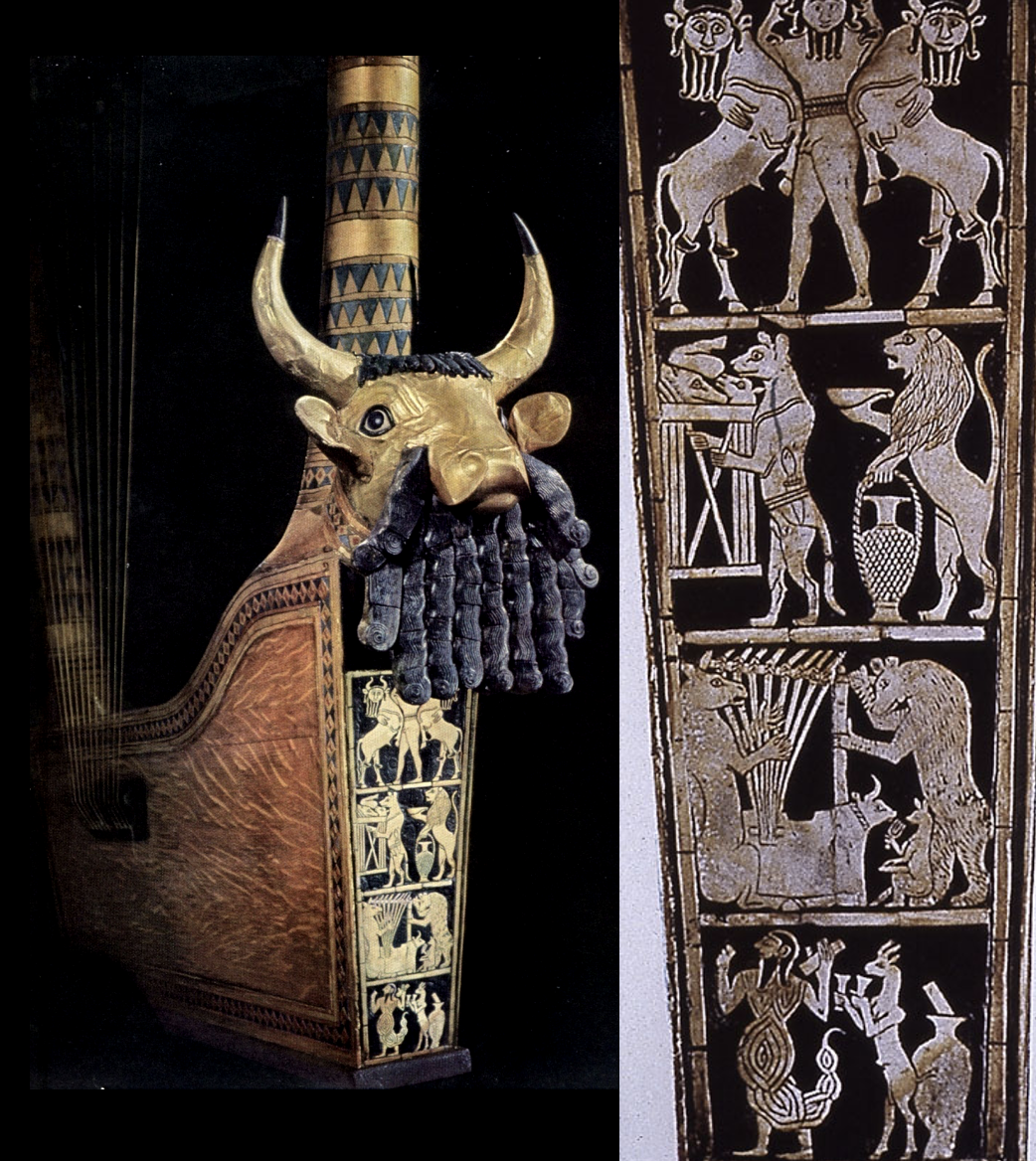
Bull headed harp from the royal cementary ar Ur, Sumerian, c. 2600 BCE
made of tar, shell
depicts one of the first recorded methods of stories, could be fictional, entirely a myth. Depicts a man and two bulls fighting (as noticed by the x shape)
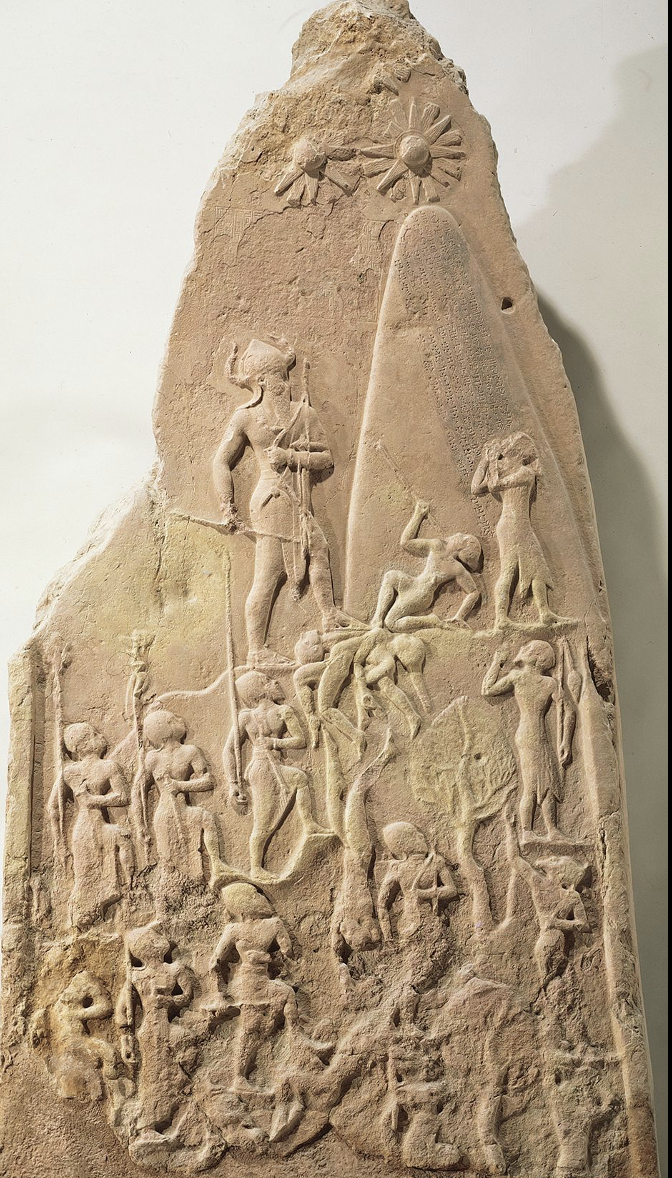
Victory Stele of Naram Sin, Akkaidian, found in Susa, Iran (originally from Sippar)
c. 2200 BCE, commemorating Naram-Sin's victory over the mountain people, displaying him as a god-like figure leading his army.
Utilizes hierarchy of scale, where the more important people are bigger/larger than everyone else. Bull horns on king’s head indicate he is godlike
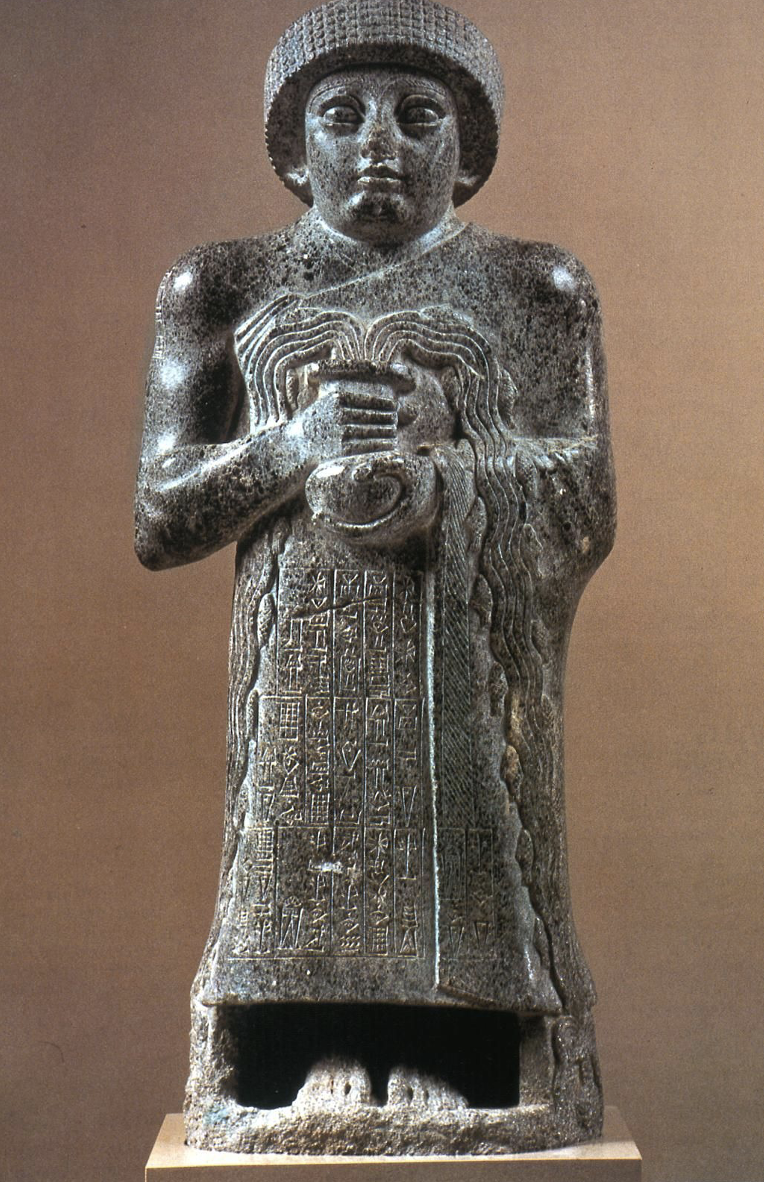
Votive statue of Gudea, Neo Sumerian, from Girsui (Telloh, Iraq), c. 2100 BCE
Made from diorite - because the rock is extremely solid, its harder to emphasize detail. Yet the statue has cuneiform along its clothing, and the design choices are purposeful - takes much more effort to carve this material. Surface of stone has high polish. Movement is centered, compact - is holding a vase with the waters of life.
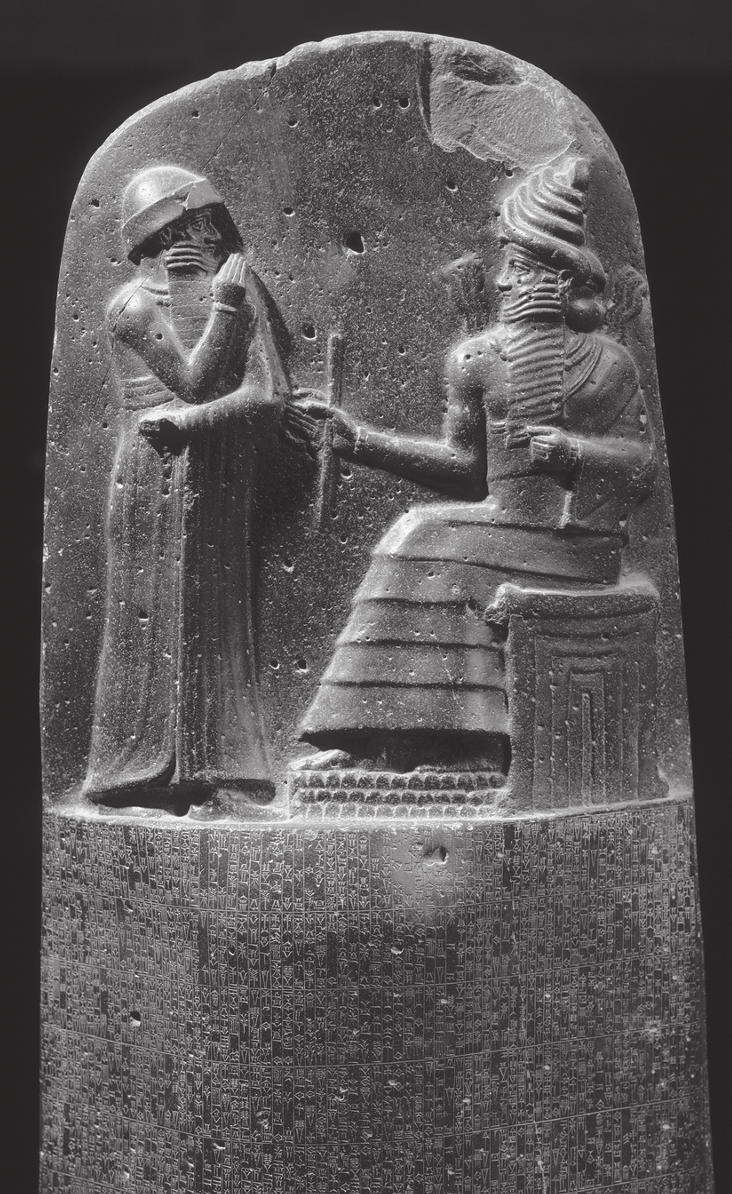
Stele of Hammurabi, Babylonian, c. 1750 BCE, found at Susa, probably from Sipper
scene portrays Hammurabi recieving the law from the throne of god, shamash (wearing a horned headress, symbolizes divinity)
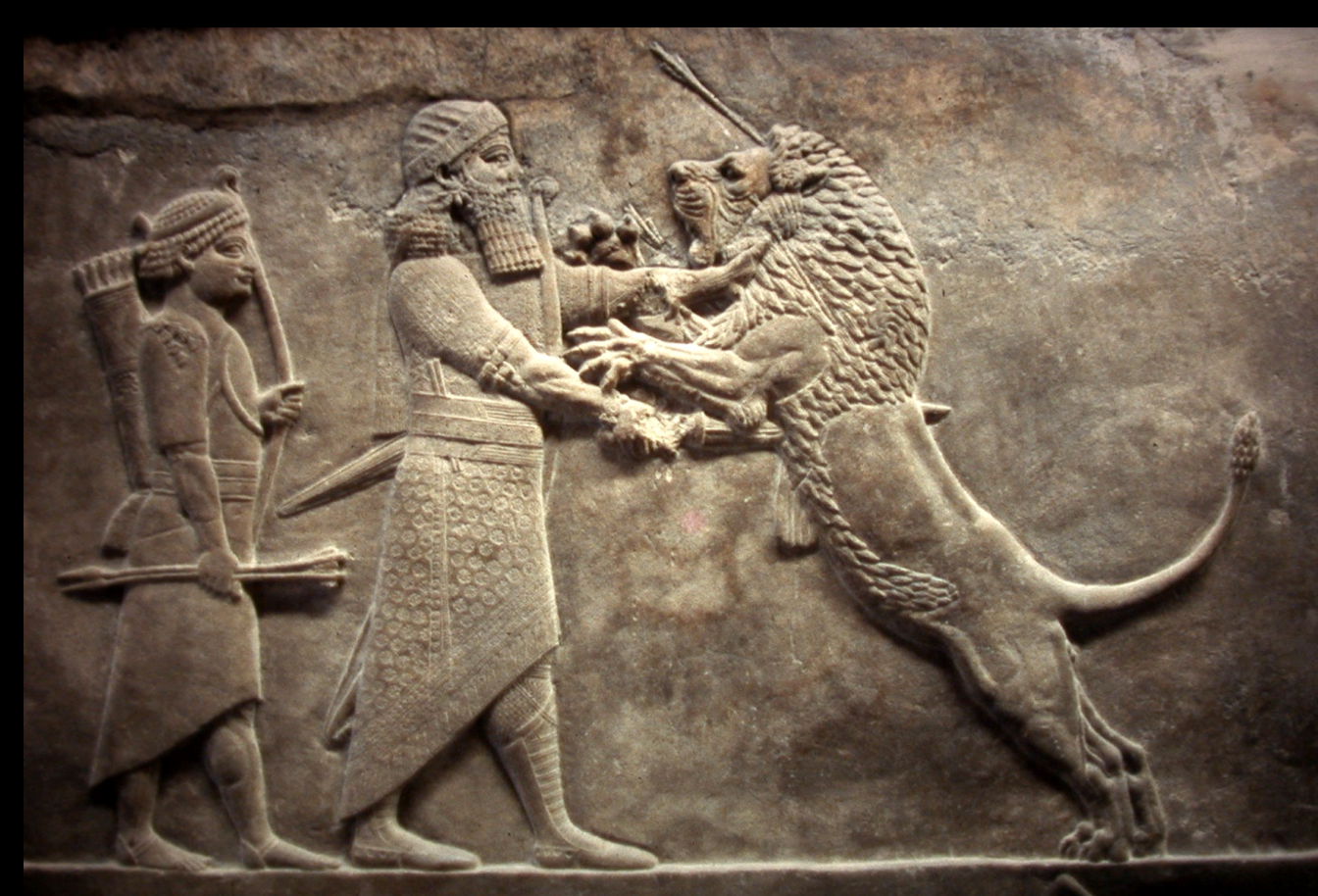
Assurbanipal killing a lion, Assyrian, from the palace at Nineveh (Iraq) c. 650 BCE
Assurbanipal II was a very learned king and a great patron of the arts and literature. His palace was decorated with many fine reliefs and included a library. Both of these are important sources on the Assyrians.
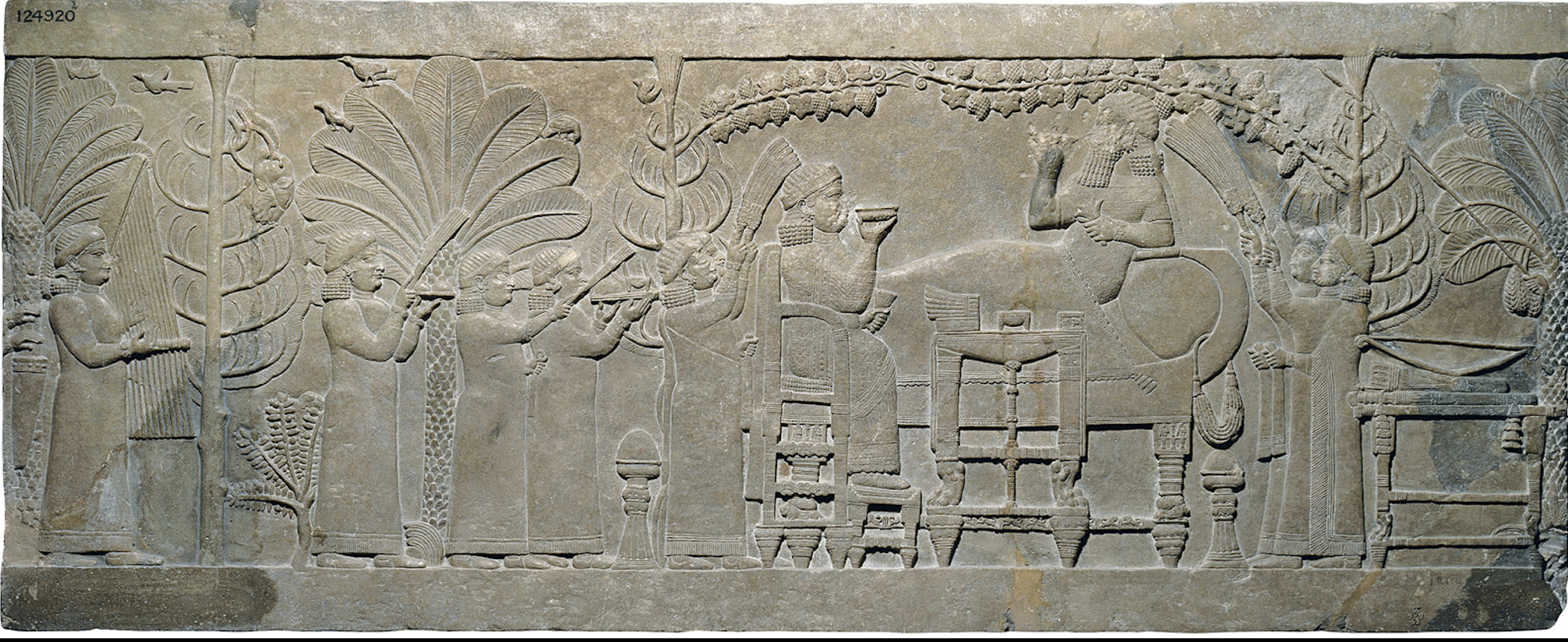
Assurbanipal and his queen in the garden, Assyrian, from the palace at Nineveh, c. 650 BCE
Purpose of Assyiran reliefs is highly propogandistic, meant to intimidate the viewer/remind them of kingly power. These reliefs are the earliest works of art that have attempted to depict real historical events. Contains realistic perspective + depth, geographic setting, necessary when depicting complex historical events